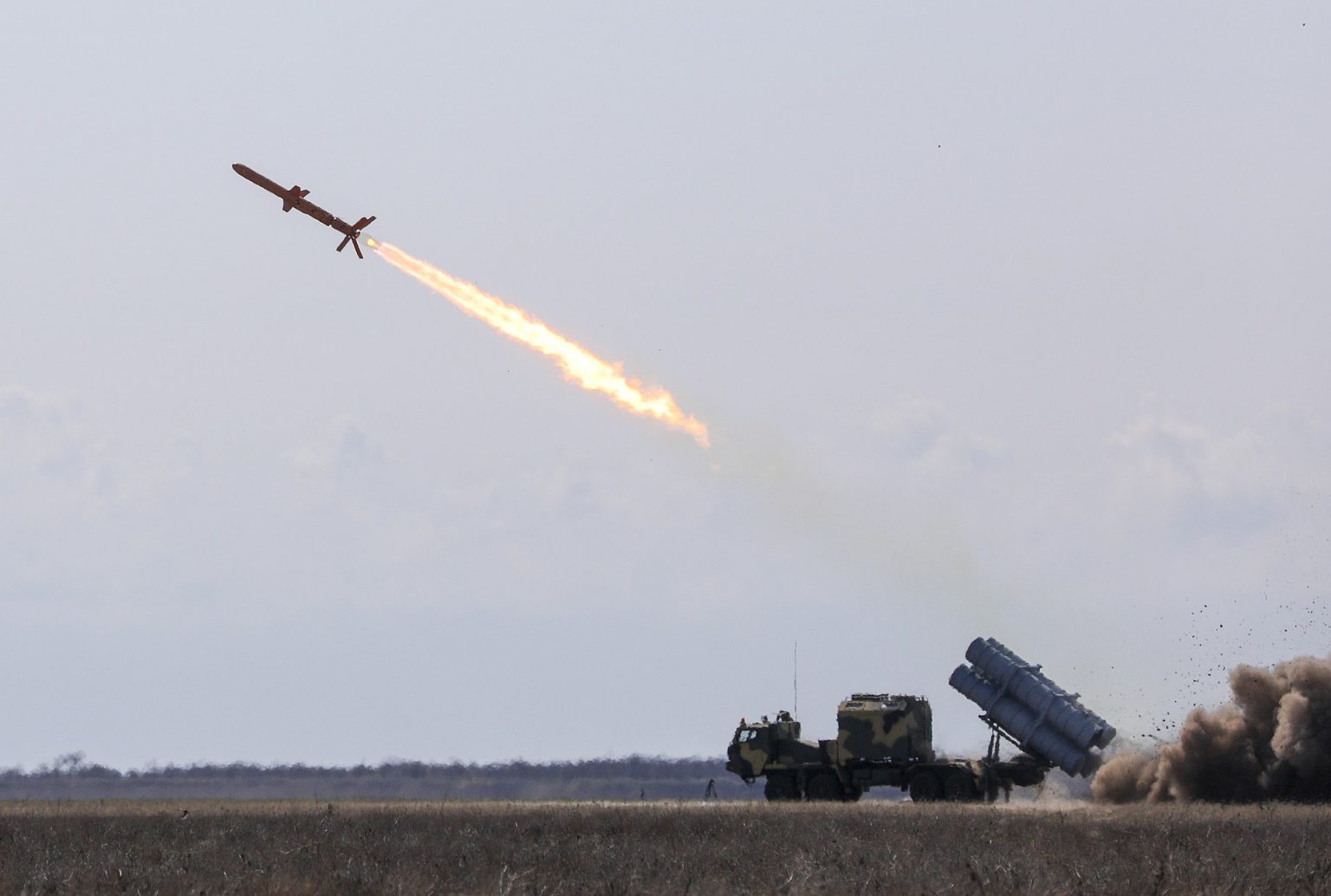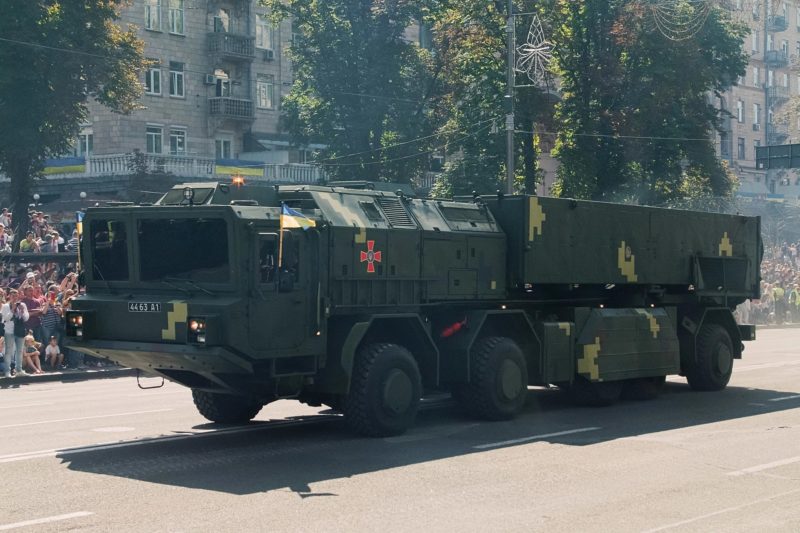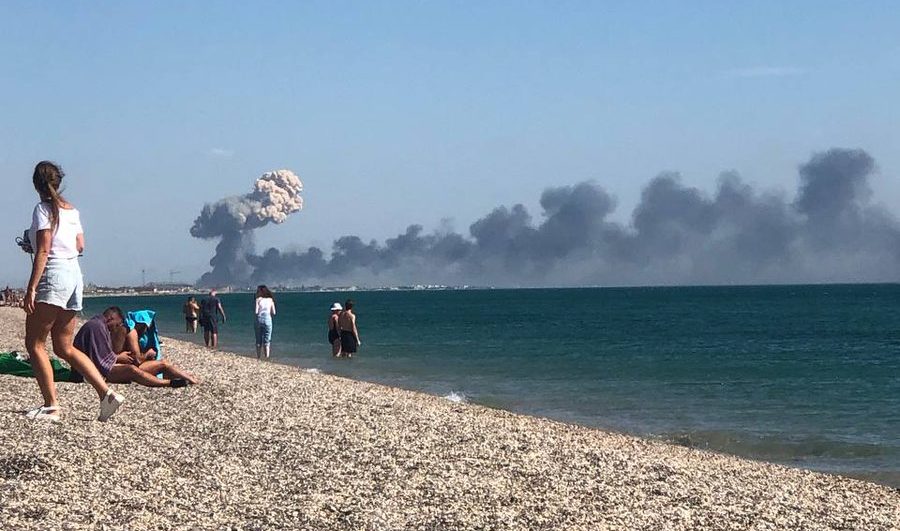On 9 August, Ukraine is believed to have hit a Russian target in occupied Crimea for the first time ever. It was an air base near the city of Saky (Saki in the Russian transcription) in southwestern Crimea more than 200 kilometers behind the front line. Officially, neither Ukraine nor Russia recognized the incident as a Ukrainian attack on the key base used for the air support of the Russian ground forces in Ukraine’s Kherson and Zaporizhzhia oblasts. Meanwhile, it’s not immediately clear what weapon Ukraine could have used to reach such a remote facility.
Experts lean towards the opinion that Ukraine might have finally received and used the American АТАСМS missile systems, while a local military source suggests that Ukraine used an unnamed indigenous weapon system. The third option may be a drone attack on ammunition warehouses at the Saky (Saki) airfield or the actions of a Ukrainian sabotage group.
https://twitter.com/EuropeOsint/status/1557050916473376769
Russia uses the airfield in Novofedorivka near Saky, occupied Crimea, as a base for its Air Force’s 43rd Fighter Aviation Regiment, which consists mainly of the Su-30SM and Su-33 fighter jets, and the Su-24M bombers.
Satellite images of Saky military airfield made 4 hours before the explosion show at least a dozen Su family fighters & 14 Su-24 bombers – Skhemy
Before the occupation of Crimea, the base belonged to Ukraine & now Russia uses it to strike areas in 🇺🇦south https://t.co/K8plsNCjb7 pic.twitter.com/GQ12198cRx
— Euromaidan Press (@EuromaidanPress) August 9, 2022
Ukrainian officials denied a Ukrainian strike
Asked by Ukrainian online newspaper Novoye Vremia whether it was the Ukrainian military who attacked the Russian base in Crimea, Yurii Ihnat, the spokesman for Ukraine’s Air Force Command gave no answer.
Later, Mykhailo Podoliak, adviser to the head of the Ukrainian President’s Office, said on the Russian TV channel Dozhd TV that the Ukrainian army had nothing to do with the explosions in Novofedorivka.
Meanwhile, Russia’s Defense Ministry claimed that the explosions were detonations of air bombs caused by a wildfire near the airbase.
Domestic systems: anti-ship Neptune or prospective HRIM-2?
Ukraine has the R-360 Neptune anti-ship cruise missiles that were used to hit the Russian Black Sea Fleet’s flagship Moskva on 13 April, which eventually caused its sinking, and to attack other Russian warships. The Neptunes have claimed an operational range of 280 kilometers.
Russian nuclear-capable flagship Moskva sinks after Ukrainian missile strike
However, these missiles were specifically designed to attack surface targets at sea, and repurposing them for ground targets was never announced by the Ukrainian military or officials.
Moreover, it is unknown how many operational Neptunes Ukraine has. When the Ukrainian military adopted this type of weapon in the late summer of 2020, the state was going to purchase 120 missiles.
Things got rolling with the purchase in December 2020, according to Volodymyr Zimin, director of the state-owned joint-stock holding company Artem – the manufacturer of the Neptune missiles.

Yet it’s unknown how many Neptune missiles the company managed to produce and supply to the army before the beginning of the all-out war and whether the production continued during the war. Several known Neptune attacks on sea targets might have depleted the stockpiles.
Nevertheless, Ukrainian military expert Viktor Kevliuk suggested that the Neptunes could have struck the Saky base using GPS coordinates to home onto land targets.
Another even more unrealistic option is the Ukrainian prospective mobile short-range ballistic missile system Hrim-2, which has been in development since 2013 but hasn’t yet seen any known test launches. The system was going to have an operational range of 280 with the possibility of extending it to 500 km.

US-made ATACMS aided by anti-radar missiles?
Mykola Bielieskov, a consultant of Ukraine’s National Institute of Strategic Studies, suggests that the Armed Forces could have used American AGM-88 HARM anti-radar missiles by launching them from modified MiG-29 or Su-27 fighter jets from the Black Sea.
Viktor Kevliuk believes that Ukraine might have used the HARMs in order to “punch a hole” in the air base’s air defenses, then the rocket artillerymen used the HIMARS systems to launch 2 ATACMS missiles through this “window” with compromised air defense.
Serhii Zhurets, director of the Defense Express company, also favors the suggestion that the Ukrainian troops have used the ATACMS.
The US-manufactured MGM-140 Army Tactical Missile System (ATACMS) has a range of up to 300 km. The ATACMS missiles can be fired from M142 HIMARS and M270 Multiple Launch Rocket System. Ukraine started receiving these launchers with shorter-range GMLRS rockets in late June and mid-July respectively.

Earlier, based on the data by the General Staff of the Ukrainian Armed Forces, military journalist Yurii Butusov noted that on August 5-7, Ukrainian forces destroyed 14 units of Russian anti-aircraft missile systems and radars, suggesting such a sudden surge to be the result of the use of the AGM-88 HARM anti-radar missiles.
Drones or partisan activities?
A drone strike shouldn’t be ruled out as well, Defense Express believes, as allegedly Ukraine had already used a drone rigged with explosives to attack an oil refinery in Novoshakhtinsk, Rostov Oblast, Russia, about 160 km behind the front.
The above-mentioned unnamed senior Ukrainian official told The New York Times that the attack on the Saky air base “involved partisan resistance forces” loyal to Ukraine, but he “would not disclose whether those forces carried out the attack or assisted regular Ukrainian military units in targeting the base.”
The Ukrainian experts interviewed by Novoye Vremia don’t believe that the explosions in Novofedorivka could have been caused by a drone attack or the actions of a Ukrainian sabotage group.
Whatever the case, the result of the attack was devastating for the Russian aircraft stationed at the Saky (Saki) air field:
https://twitter.com/OSINTua/status/1557440576806608897
Read more:
- Traffic jams in Crimea today as Russians are leaving it
- Russo-Ukrainian War, Day 168: A series of explosions destroyed a Russian airfield in Crimea
- Russian war began with Crimea and must end with its liberation – Zelenskyy
- Ukraine needs the capability to attack Russian airfields – former commander US Army Europe
- Russian nuclear-capable flagship Moskva sinks after Ukrainian missile strike




